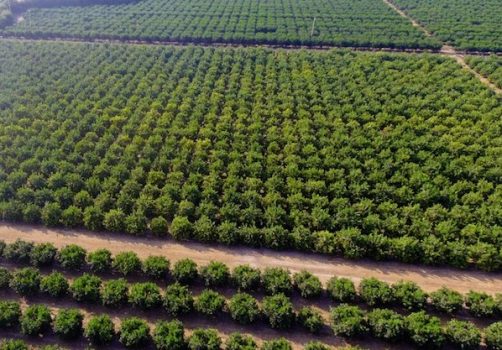To regenerate and revitalize the soil and keep the environment blooming, farmers can go for regenerative agriculture practices. Such practices help in improving soil nutrient cycling and enhances the diversity of organisms living in the soil ecosystem. It also boosts carbon sequestration, improves water cycle, cropping pattern and fighting the climate crisis.

Regenerative agriculture facilitates a more collaborative relationship with nature and aims to encourage sustainable and profitable farming models. Now many organisations are promoting regenerative agriculture as a tool for restorative practices that not just grow food but progressively improve ecosystems as well. At many places around the world, local support networks are coming up to help farmers in understanding the concept of regenerative agriculture and to train them. Even corporates are joining this initiative to contribute to carbon sequestration and farmers’ education. In fact, a leading global food and beverage company has pledged to support the efforts to bring more and more areas under regenerative agriculture.
Globally, agriculture is the second-biggest sector that contributes to carbon emissions. In India, the contribution is over 19 percent of the total carbon emissions. Research suggests that India can reduce it by 18 percent if mitigation measures are adopted. And regenerative agriculture turns out to be a proper solution for climate mitigation.
Crop improvement using conventional breeding or innovative technologies like gene editing is one of the key methods to achieve the objectives of regenerative agriculture as the improved crop varieties would use lesser chemical inputs and water for higher productivity. Innovative technologies have huge potential in increasing crop yields, making food nutritious and healthier.
In India since time immemorial, there have been sentiments and culture to offer something to nature as gratitude for what it gives to humankind. Regenerative agriculture is a reflection of the same attitude. This can make the adoption and implementation of the initiative on a large scale quite possible. Regenerative agriculture has no one specific protocol. A variety of practices are involved such as recycling farm waste, water management, reduction in soil tillage, integrated management of cropping and livestock, and also agroecology, permaculture, polyculture, aquaculture, agroforestry, restoration ecology among others. So, it can be implemented in accordance with the crop cultivated and local conditions. It is about the holistic management of farm practices for a sustainable outcome.
There is strong support and commitment shown by the Indian government to encourage farming practices that fall in the ambit of regenerative agriculture. According to the NITI Aayog, there are around 2.5 million farmers in the country who are practising regenerative agriculture. The government has set a goal to bring 2 million hectares of land under it by 2025. Moreover, many different states too are working on plans to infuse sustainable practices to transform agriculture.
There is growing demand from consumers for clean, quality and nutrient-rich food and are ready to pay more. This opens up an opportunity for farmers to go for sustainable farming practices that ensures remunerative prices and keep their farms healthy. Farmers must join the ongoing efforts for their transition to regenerative agriculture as it is going to improve their livelihood . Consumers too must ask for products grown using sustainable farming ways. In return, they too get access to nutrient-rich food, promoting better human health. All this will facilitate smooth, effective and faster adoption of this agriculture practice. Research has found that regenerative agriculture can reverse climate change. Combating climate change is a need of the hour since it affects agriculture the most, which is the foundation of our food system and even of our existence.

